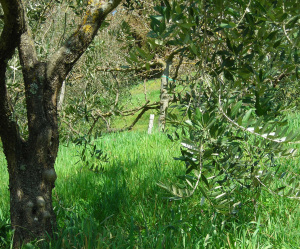I think that the beauty seen in science falls into four broad categories. First, a scientist may find beauty in their experimental system, whether it is a model organism, a certain diagnostic printout, or an aesthetically pleasing series of molecules.
Secondly, there is the cleverly devised experiment carried out with skill and patience that results in good clear data: the molecular biologist’s sharp DNA bands on a gel, the organic chemist’s high yield, or the physicist’s precise measurements.
Third, the data and the theory that gathers them into a coherent whole may have an intrinsic beauty that is both striking and satisfying. Physicists have appreciated beauty in symmetry, in order, and in complex systems that are reducible to a series of ‘elegant’ mathematical equations. Biological systems are more complex and difficult to describe mathematically, so the beauty observed in the life sciences is more often to do with colour, pattern, shape, movement, or detail. At times, complex biological systems are understood at a level that does reveal their mathematical simplicity. When order emerges out of apparent chaos biologists begin to use words like ‘striking’, ‘beautiful’, and ‘astonishing’. If a theory is developed that can be used to predict further experiments and explain other data, that is also beautiful in its own way.[1] We appreciate the order, unity and simplicity that it brings to our understanding of the world.
It was a sort of act of faith with us that any equations which describe fundamental laws of Nature must have great mathematical beauty in them…It was a very profitable religion to hold and can be considered as the basis of much of our success. Paul Dirac
Finally, there is the beauty that the scientist themself brings to the data: the black and white telescope images that are coloured to distinguish between different wavelengths of light, elegant graphs, or a carefully crafted PowerPoint presentation filled with photographs of microscopic organisms.[2]
Each of these four types of beauty involves characteristics that are intrinsic to the natural world, but also require observation, imagination and creativity on the part of the scientist. We enjoy scientific beauty – the startling elegance of the mathematical solution, or the model that makes sense of what seemed to be a muddle of data – in the same way that we enjoy the serenity of a garden or carefully tended olive grove on a summer’s day.
As Shannon Stahl said, it’s the beauty of shalom: not only is the prospect attractive, but it is also deeply satisfying, ordered and harmonious. To achieve that state the scientist, gardener or farmer has expended time and energy. Bringing order from chaos, watching things develop and become chaotic again and bringing order once more using reason, creativity and imagination, is one of the most fulfilling experiences in life. The process is usually protracted, complicated, expensive and often painful, but we somehow have the drive to do it over and over again. To me, the Christian teaching that God has made us in his image using a long and complex process in order to work out our own processes in the world, makes perfect sense of this experience.





